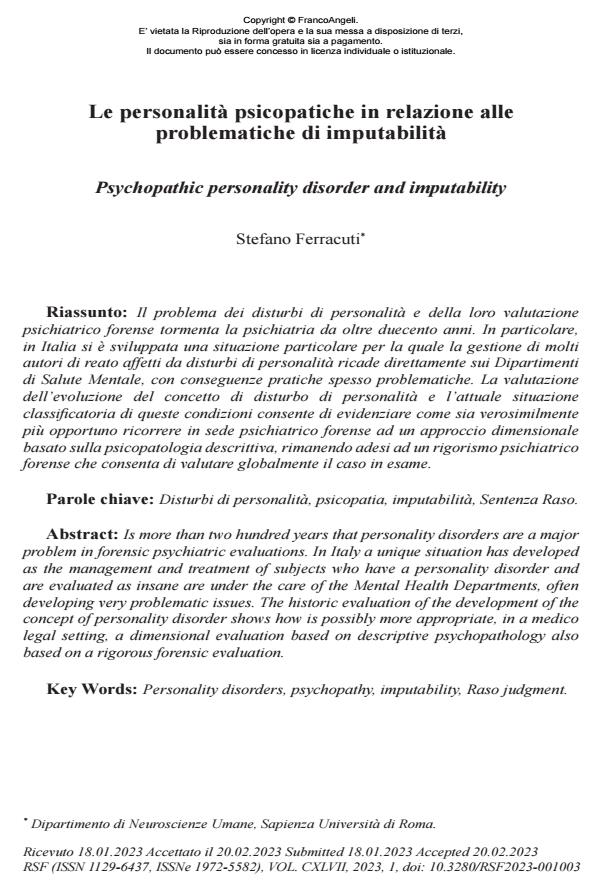Psychopathic personality disorder and imputability
Journal title RIVISTA SPERIMENTALE DI FRENIATRIA
Author/s Stefano Ferracuti
Publishing Year 2023 Issue 2023/1
Language Italian Pages 15 P. 33-47 File size 174 KB
DOI 10.3280/RSF2023-001003
DOI is like a bar code for intellectual property: to have more infomation
click here
Below, you can see the article first page
If you want to buy this article in PDF format, you can do it, following the instructions to buy download credits

FrancoAngeli is member of Publishers International Linking Association, Inc (PILA), a not-for-profit association which run the CrossRef service enabling links to and from online scholarly content.
Is more than two hundred years that personality disorders are a major problem in forensic psychiatric evaluations. In Italy a unique situation has developed as the management and treatment of subjects who have a personality disorder and are evaluated as insane are under the care of the Mental Health Departments, often developing very problematic issues. The historic evaluation of the development of the concept of personality disorder shows how is possibly more appropriate, in a medico legal setting, a dimensional evaluation based on descriptive psychopathology also based on a rigorous forensic evaluation.
Keywords: Personality disorders, psychopathy, imputability, Raso judgment.
Stefano Ferracuti, Le personalità psicopatiche in relazione alle problematiche di imputabilità in "RIVISTA SPERIMENTALE DI FRENIATRIA" 1/2023, pp 33-47, DOI: 10.3280/RSF2023-001003